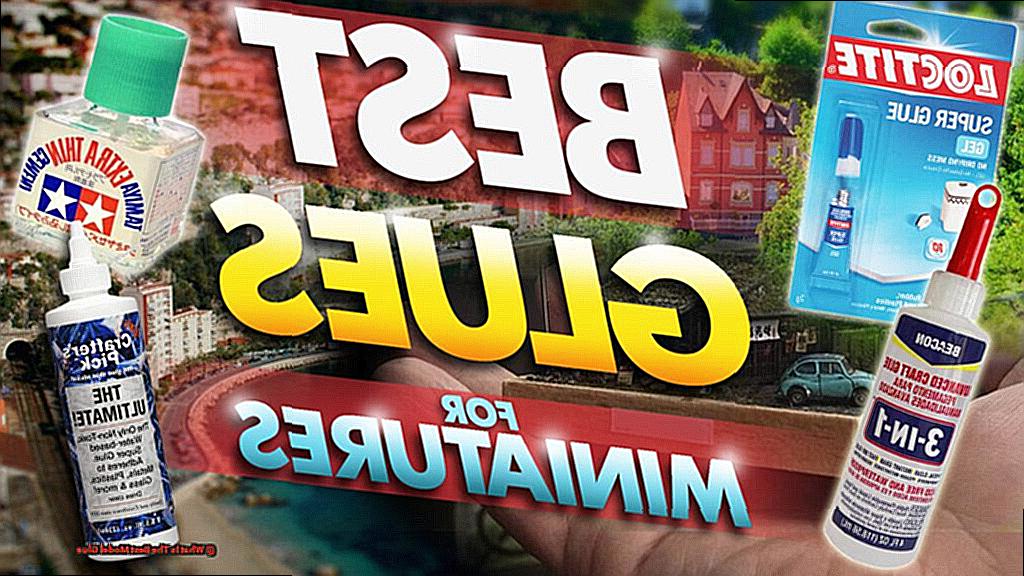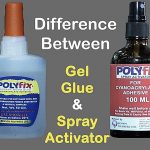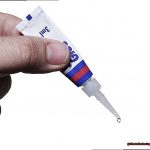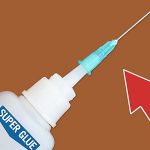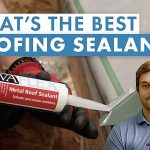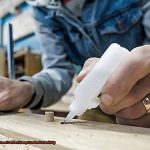Welcome to the captivating world of model building, where every stroke of precision and attention to detail brings your masterpiece to life. But here’s the catch – your creation is only as strong as the glue that holds it together.
That’s why finding the best model glue is an essential quest for every serious modeler.
Picture this: you’re delicately assembling the intricate components of your dream model, each piece fitting snugly into place. You reach for your trusty glue, ready to forge an unbreakable bond, only to be met with disappointment. Your heart sinks, your vision wavers, and suddenly, all your hard work hangs in limbo.
Fear not. Today, we embark on a thrilling journey to uncover the crème de la crème of model glues – those magical elixirs that guarantee enchanting success and bring your creations to life like never before.
Join us as we delve into the mesmerizing realm of model glues, exploring their diverse types, exceptional properties, and most importantly, their status as revered champions among hobbyists and professionals alike. We’ll unravel the secrets behind their unparalleled bonding strength, perfect viscosity, and compatibility with various model materials.
From classic tube glues that have stood the test of time to cutting-edge wonder adhesives that push boundaries, we’ve got you covered. Prepare yourself for a revelation as we unveil sought-after model glues that offer extended working time – allowing artists like you to finesse their craft without fear of premature drying.
So whether you’re a seasoned veteran or a budding enthusiast itching to make your mark in the world of modeling, get ready for an exhilarating leap forward in your artistic journey. Stay tuned as we reveal hidden gems that will revolutionize your craftsmanship and help you achieve jaw-dropping perfection beyond imagination.
Get set, glue enthusiasts – the quest to find the best model glue begins now.
Drying Time
Contents
- 1 Drying Time
- 2 Bond Strength
- 3 Application Ease
- 4 Odor and Toxicity
- 5 Different Types of Plastic Require Different Glues
- 5.1 Polystyrene Plastic and Polystyrene Cement: The Perfect Pair
- 5.2 Polyethylene and Polypropylene Plastics: Overcoming the Bonding Challenge
- 5.3 PVC Plastic and PVC Adhesive: A Match Made in Model Making Heaven
- 5.4 ABS Plastic and ABS Cement: The Dynamic Duo
- 5.5 Testing, Tips, and Considerations: Ensuring Success Every Time
- 6 Personal Preference
- 7 Expert Recommendations
- 8 Conclusion
Embarking on a modeling project requires meticulous attention to detail, especially when it comes to selecting the ideal glue. Among the myriad of factors to consider, drying time stands out as a critical component in determining the perfect model glue. In this captivating article, we will explore the significance of drying time and equip you with invaluable insights to make an enlightened choice.
Unraveling the Mystery of Drying Time:
Drying time is the enchanting dance between patience and precision, referring to the duration it takes for the glue to reach its ultimate dryness and solidify completely. This magical transformation varies across different types of model glues, ultimately impacting your modeling journey and the masterwork you create.
Factors That Shape Your Decision:
- Material Compatibility: Like a painter selecting their palette, different model materials require specific adhesives for impeccable bonding. Polystyrene cement reigns supreme for polystyrene plastic, while other plastics demand alternative glues. Ensuring compatibility between your chosen glue and material is vital for a seamless union.
- Complexity Unveiled: The intricate tapestry of your model intricacy should guide your choice of drying time. Quick-drying glues, akin to nimble fingers, gracefully cater to delicate or intricate models that demand precise assembly, minimizing the risk of unwelcome disruptions. In contrast, grandiose and multifaceted models luxuriate in the embrace of slower drying glues, affording ample time for meticulous adjustments and graceful positioning.
- Climate and Environment: The whims of Mother Nature hold sway over drying times, as temperature and humidity waltz together in an elegant pas de deux. Warmer and drier climates lend themselves to swift drying, akin to the sun’s warm caress hastening the process. Conversely, colder or more humid environments demand a slower tempo, allowing the glue to languish in its transformative journey. Harmonizing your model glue choice with your working environment ensures an enchanting symphony of impeccable results.
A World of Possibilities:
Enter the realm of model glue brands that grant you the power to bend time and meet your unique needs. Here, you shall discover the pantheon of glues offering an array of drying time options, unlocking a universe of flexible choices to suit your creative desires.
Bond Strength
Prepare to embark on a thrilling journey into the realm of bond strength and its pivotal role in creating models that stand the test of time. Grab your tools, engage your minds, and let’s explore the diverse range of glues and their extraordinary bond strengths for model making.
Super Glue – The Mighty Bond Strength:
In the realm of sheer strength, one adhesive reigns supreme – cyanoacrylate adhesive, also known as super glue. This adhesive possesses the power to forge an unyielding bond capable of withstanding vigorous vibrations and impactful forces. Its secret lies in its lightning-fast polymerization process triggered by moisture. Super glue is the ideal choice for non-porous materials such as plastic, metal, and glass, offering model makers a reliable and unbreakable bond.
Epoxy Adhesive – The Versatile Warrior:
Now we turn our attention to epoxy adhesive, a true warrior in the realm of bond strength. Composed of two components – a resin and a hardener – epoxy needs to be artfully mixed before it can unleash its remarkable potential. Once combined, it reveals a bond that defies the challenges of temperature fluctuations, chemical exposure, and moisture infiltration. Whether you need to attach weighty components or meld different materials together, epoxy stands as a versatile choice that guarantees durability and unwavering strength in your models.
Wood Glue and Craft Glue – The Porous Partners:
Let us now delve into the world of wood glue and craft glue – the unrivaled partners for those who work with wooden or paper models. These specialized glues are meticulously formulated to excel with porous materials, forging flexible bonds that resist the scourge of cracks. While wood glue may require patience due to its longer drying time compared to super glue or epoxy, it rewards model makers with exceptional bond strength for wooden creations. So whether you are crafting a delightful wooden marvel or a delicate paper masterpiece, rest assured that these glues will serve as your steadfast allies.
Application Ease
Viscosity, a fancy word for thickness, is a crucial factor in the application ease of model glue. Picture yourself trying to apply a thick and gloopy glue to delicate model parts – not a pretty sight, right? That’s why opting for a glue with a thinner consistency is a wise choice. It spreads smoothly and evenly, ensuring that your bond is strong and invisible.
Precision is the name of the game when it comes to applying glue to small and delicate model parts. That’s where the applicator tip or nozzle comes into play. A fine-tip applicator allows you to apply the glue with utmost control and accuracy. No more accidental spills or messy blobs. But if you’re working on larger areas or bigger models, fear not. The brush applicator is your go-to choice, providing convenience and ease when covering larger surfaces.
Now let’s talk about drying time – every impatient model-maker’s dream come true. Quick-drying glues are a game-changer. They allow for faster assembly, reducing the risk of accidentally moving or disturbing parts during the bonding process. So say goodbye to endless waiting and hello to speedy model-making.
But wait, there’s more. Different types of model glues have different application methods. Some require you to apply them directly to the surfaces being bonded, while others may require you to apply them to both surfaces before joining them together. Don’t forget to read and follow the instructions provided by the manufacturer for the best application techniques and safety precautions.
Ah, the dreaded odor dilemma. We’ve all been there, struggling to work with a glue that smells like a chemistry lab gone wrong. Fear not. Nowadays, manufacturers have taken this into account and developed glues with less offensive odors. So you can breathe a sigh of relief – both figuratively and literally.
Last but not least, personal preference and experience also play a role in determining the application ease of a model glue. It’s all about finding the glue that suits your comfort level and familiarity. Some individuals may swear by a certain type or brand of glue, while others may have their own secret techniques. Don’t be afraid to experiment and find what works best for you.
Odor and Toxicity
Embarking on a model-building journey is nothing short of exhilarating. But amidst the excitement, we must not overlook a crucial topic that often lurks in the shadows – the potential health hazards associated with model glue.
Unmasking the Fumes That Linger
Within the confines of model glues lie volatile organic compounds (VOCs) eagerly waiting to release their pungent odors and fumes. These invisible assailants can wreak havoc on your health, irritating your respiratory system and leaving you vulnerable to dizziness, headaches, and even bouts of nausea. And if you possess sensitivities or allergies, brace yourself for an amplified assault.
Safeguarding Your Passion
To ensure a safe and enjoyable journey into the world of model building, it is imperative to take precautionary measures. Here’s how you can shield yourself from harm:
- Embrace the Breath of Fresh Air: Seek solace in a well-ventilated haven. Open windows or embrace the power of a fume extraction system, banishing those toxic fumes to oblivion.
- Armor Yourself: Don a mask or respirator specially crafted to shield you from airborne particles. This simple act of protection can drastically reduce your exposure to hazardous substances.
Not all model glues are cut from the same cloth when it comes to odor and toxicity levels. Here’s your compass for this perilous terrain:
- Sniff Out the Optimal Glue: Venture into the realm of glues specifically concocted to emit minimal odor or even no odor at all. These gentle giants utilize non-toxic or less toxic ingredients, paving the way for a safer experience.
- Decode the Secrets: Unravel the enigmatic codes concealed within product labels, unveiling vital details about odor levels and toxicity. Manufacturers treasure this information, granting you the power to make informed decisions.
- Tap into the Collective Wisdom: Unlock a treasure trove of insights by immersing yourself in online forums and hobbyist communities. Engage with fellow enthusiasts who have braved the odorous and toxic terrains, gleaning precious advice and recommendations about different model glues.

Different Types of Plastic Require Different Glues
Are you ready to embark on an exciting journey into the world of plastic model making? Building scale models requires precision, attention to detail, and of course, the right glue. In this comprehensive guide, we will explore the diverse world of plastic and the corresponding glues that will ensure your masterpiece stays intact. So, let’s dive in and discover the secrets to choosing the perfect adhesive for your plastic model.
Polystyrene Plastic and Polystyrene Cement: The Perfect Pair
Polystyrene plastic is a dream material for model makers due to its lightweight and easy-to-work-with nature. To bond polystyrene plastic effectively, you need polystyrene cement. This magical glue doesn’t just stick the surfaces together; it actually melts them, creating an unbreakable bond. But remember, this glue is exclusive to polystyrene plastic – don’t try it on other types.
Polyethylene and Polypropylene Plastics: Overcoming the Bonding Challenge
Polyethylene and polypropylene plastics, commonly found in packaging materials, can be quite stubborn when it comes to bonding. Their low surface energy makes them resistant to many adhesives. However, fear not. The superhero of glues, cyanoacrylate glue (also known as super glue), comes to the rescue. Pair it with a primer, and you’ll conquer even the most challenging plastics.
PVC Plastic and PVC Adhesive: A Match Made in Model Making Heaven
PVC (Polyvinyl Chloride) is a star player in model making, especially for piping and structural components. When it comes to bonding PVC, nothing beats PVC pipe cement or PVC adhesive. These glues unleash a chemical reaction that fuses the surfaces together, creating a bond that can withstand any challenge your model may face.
ABS Plastic and ABS Cement: The Dynamic Duo
ABS (Acrylonitrile Butadiene Styrene) plastic is tough, durable, and commonly found in automotive parts and toys. To bond ABS like a pro, reach for ABS cement. This adhesive creates a chemical bond that ensures a secure connection between the plastic parts. Alternatively, a multipurpose adhesive can also save the day, working its magic on various surfaces.
Testing, Tips, and Considerations: Ensuring Success Every Time
Before committing to gluing your entire model together, it’s crucial to test the glue on a small, inconspicuous area. This simple step ensures compatibility and effectiveness. Consider factors such as the size and weight of your model and its intended use. For added strength and stability, mechanical fasteners like screws or clips may become your model’s secret weapons.
Personal Preference
Just like a secret ingredient that adds magic to a recipe, the right glue can elevate your masterpiece to new heights. So, let’s unravel the factors that shape our personal choices and solve the enigma of glue selection together.
The Type of Model Being Built:
Let’s begin by understanding how the type of model being built dictates our glue preference. Whether you’re constructing a majestic plastic creation, a sturdy metal marvel, or a classic wooden wonder, each material demands a specific adhesive for flawless adhesion. After all, nobody wants their spaceship falling apart mid-flight.
Level of Experience:
Experience is the harbinger of wisdom and, in the realm of model making, it also shapes our preferences. Seasoned modelers have acquired invaluable knowledge through trial and error, discovering glues that perfectly complement their skills. They have mastered techniques that synergize seamlessly with their favored brand or type of glue. Conversely, newcomers embrace experimentation, relishing the discovery process until they find their ultimate adhesive ally.
Ease of Use:
The ease of use factor significantly influences personal preference. Some modelers crave glues equipped with applicators that offer precise control, enabling them to execute intricate maneuvers effortlessly. Others prioritize convenience and opt for squeeze bottles or tubes that effortlessly dispense adhesive with a gentle squeeze. Finding a glue that harmonizes flawlessly with your workflow can transform your creative experience from frustration to pure joy.
Odor and Drying Time:
Inhale success without compromising your olfactory senses. Odor plays a pivotal role in personal preference for many modelers. Some glues emit pungent fumes that can overwhelm the senses during long hours at the workbench. If you yearn for a more pleasant working environment, odorless or low-odor options become your cherished allies. Additionally, drying time is a crucial consideration. Quick-drying glues satiate the thirst for instant gratification, while slower-drying options grant flexibility during assembly, allowing for meticulous adjustments.
Expert Recommendations
Prepare to embark on an extraordinary journey as we reveal the crème de la crème of model glues. In this section, we present expert recommendations that will take your modeling experience to new heights. Explore the market’s finest glues, each possessing unique qualities and capabilities.
Tamiya Extra Thin Cement: Champion of Bonding Strength
For exceptional bonding strength and lightning-fast drying properties, the Tamiya Extra Thin Cement reigns supreme. With its liquid form and brush applicator, this glue ensures precise and controlled application. Witness the magic as plastic parts seamlessly bond without leaving behind any visible marks or residue.
Testors Cement for Plastic Models: Time-Tested Classic
A staple in the modeling community, the Testors Cement for Plastic Models has withstood the test of time. Delivering a robust bond and a relatively quick drying time, this glue offers reliability and convenience. Whether you prefer tubes or bottles with brush applicators, this versatile option caters to your modeling needs.
Deluxe Materials Plastic Magic Cement: Versatility at Its Finest
When versatility is key, the Deluxe Materials Plastic Magic Cement takes center stage. This extraordinary glue excels with different types of plastics commonly used in model building, including styrene and ABS. Its remarkable bonding strength fills gaps and seams effortlessly, while its longer drying time allows for adjustments before it fully sets.
Bob Smith Industries Insta-Cure+ Gap Filling Cyanoacrylate Adhesive: Super Glue Sensation
For enthusiasts of super glues, we highly recommend the Bob Smith Industries Insta-Cure+ Gap Filling Cyanoacrylate Adhesive. Offering varying viscosities, this adhesive lets you choose the perfect thickness for your specific modeling requirements. Experience rapid bonding with exceptional strength, capable of filling small gaps and bonding materials beyond plastic.
Pacer Technology Zap-A-Gap CA+: Odorless and Non-Toxic Marvel
If strong odors are a concern or safety is a top priority, the Pacer Technology Zap-A-Gap CA+ is your ideal choice. This glue caters to those with sensitivities or a preference for non-toxic options. With its quick-drying properties and reliable bond, it proves suitable for a myriad of modeling applications.
Conclusion
When it comes to finding the best model glue, there are a few factors to consider. The right glue can make all the difference in your model-building experience, ensuring that your pieces stay securely in place and creating a finished product that you can be proud of. So, what is the best model glue? Let’s dive in and explore some top contenders.
One option to consider is the Tamiya Extra Thin Cement. This glue is known for its strong bond and quick-drying formula, making it perfect for intricate models with small parts. Its thin consistency allows for precise application, minimizing the risk of excess glue ruining your hard work.
Another popular choice among model enthusiasts is the Testors Plastic Cement. This versatile adhesive works well on various types of plastics commonly used in model kits. It has a medium viscosity, providing enough time for adjustments before fully setting.
If you’re looking for an all-purpose glue that can handle different materials, then the Aleene’s Original Tacky Glue might be worth considering. This non-toxic adhesive bonds quickly and dries clear, making it suitable for both plastic and other crafting materials.
For those seeking a more specialized option, the Bob Smith Industries Super Glue is highly recommended. With its fast-setting properties and strong bond strength, this cyanoacrylate adhesive is ideal for bonding metal or resin parts in your models.
Ultimately, determining the best model glue depends on your specific needs and preferences. Consider factors such as drying time, bond strength, compatibility with different materials, and ease of use when making your decision.
In conclusion, there are several excellent options available when it comes to choosing the best model glue. Whether you prioritize precision application or versatility across different materials, there’s a glue out there that will meet your requirements.

